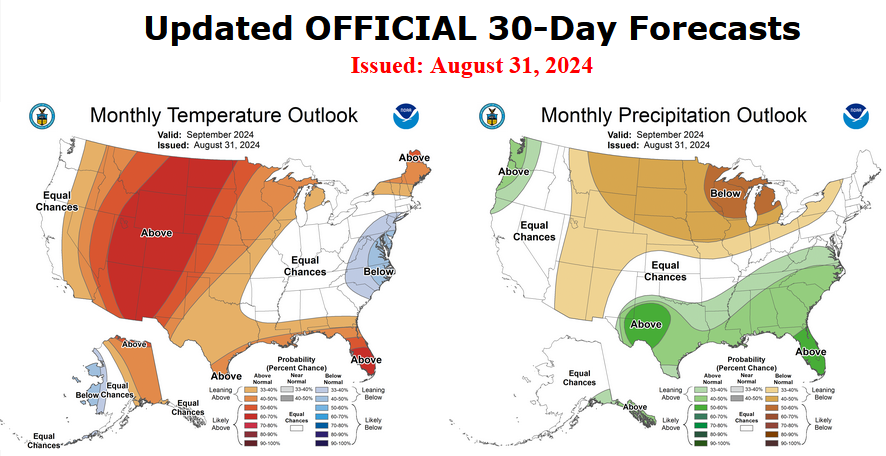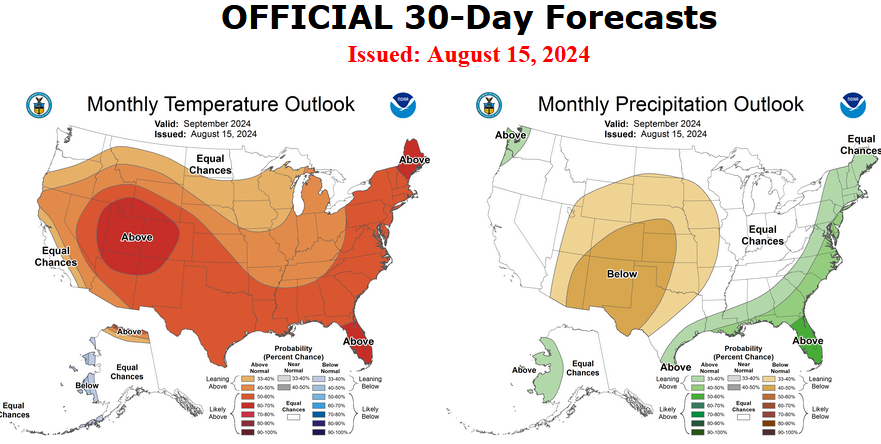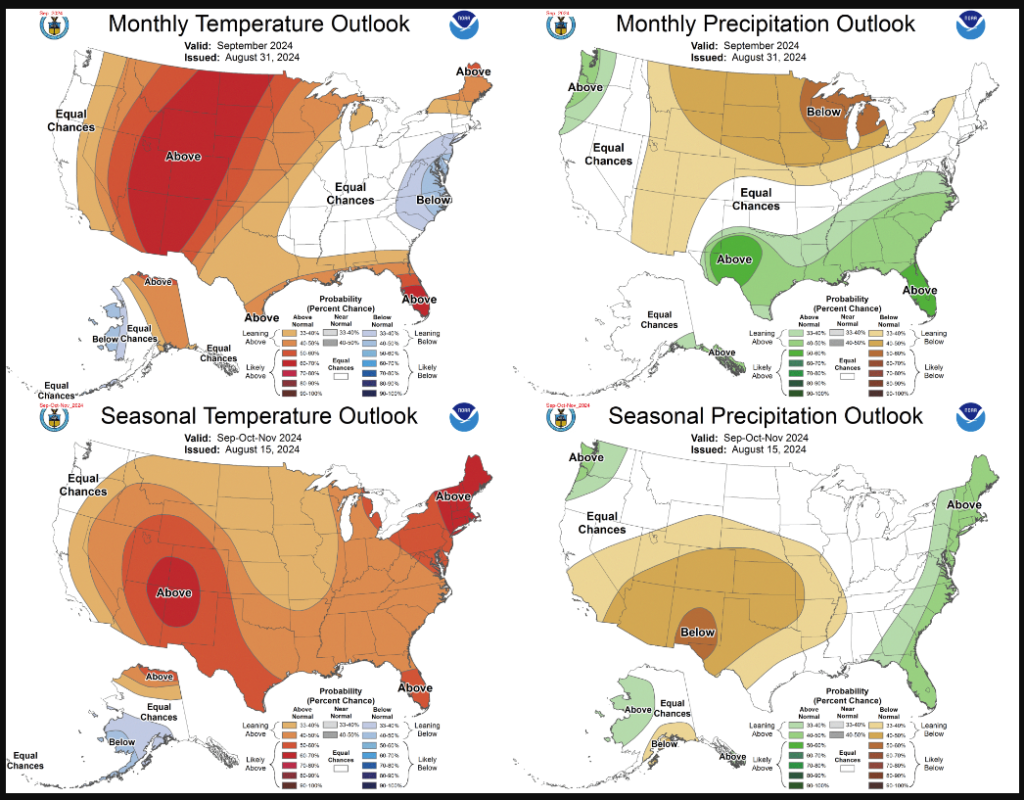Today Through the Fourth Friday (22 to 28 days) Weather Outlook for the U.S. and a Six-Day Forecast for the World: posted September 1, 2024
This article focuses on what we are paying attention to in the next 48 to 72 hours. The article also includes weather maps for longer-term U.S. outlooks and a six-day World weather outlook which can be very useful for travelers.
First the NWS Short Range Forecast. The afternoon NWS text update can be found here after about 4 p.m. New York time but it is unlikely to have changed very much from the morning update. The images in this article automatically update.
Short Range Forecast Discussion
NWS Weather Prediction Center College Park MD
Sun Sep 01 2024
Valid 12Z Sun Sep 01 2024 – 12Z Tue Sep 03 2024…Areas of heavy rain with the potential for flash flooding across the
south-central U.S. through Labor Day……Unsettled weather across much of the East continues today…
…Well above average, hot late-summer temperatures spread from the
northwestern to north-central U.S. this holiday weekend…Areas of locally heavy rainfall will continue over portions of the
south-central U.S. through the holiday weekend as a couple disturbances
help to drive shower and thunderstorm chances. First, a lingering coastal
low will bring more storms to the western Louisiana and upper Texas Gulf
Coasts today (Sunday) with a Marginal Risk of Excessive Rainfall (level
1/4) and some isolated flash flooding. The low will drift southwestward
Monday (Labor Day), bringing storm chances to the central Texas Gulf
Coast. Meanwhile, additional storms are expected along and to the north of
a lingering frontal boundary draped from north Texas southwest towards the
Rio Grande, with another Marginal Risk area Sunday across southeastern New
Mexico and central/western Texas. An embedded weakness in broader
upper-level ridging aloft will help to encourage more widespread storms on
Monday with a higher threat of heavy rainfall and scattered flash
flooding, especially as soils become wetter given rainfall over the first
part of the weekend. A Slight Risk of Excessive Rainfall (level 2/4) has
been introduced for the Texas Hill Country where this threat is greatest,
with a continued more expansive Marginal Risk across southeastern New
Mexico and Texas. The widespread storms and clouds will keep temperatures
below average through the weekend in the region, with highs generally in
the 80s, and even some 70s on Monday for west Texas and eastern New
Mexico.Showers and storms will also remain in the forecast for much of the
eastern U.S. ahead of a lingering frontal boundary. The heaviest rainfall
is expected today from the southern Mid-Atlantic/Carolinas west through
the southern Appalachians where some isolated flash flooding will be
possible. Locally heavy rainfall will also be possible west through the
Tennessee Valley and into the Mid-South. More scattered, lighter showers
are expected across the Northeast. A second, stronger cold front will
bring drier air by Monday for most locations, though storms are expected
to continue ahead of the front along the Carolina coasts southwest through
Georgia towards the central Gulf Coast. Daily thunderstorms are also
forecast for the Florida Peninsula. Forecast highs today range from the
70s in New England and the Great Lakes/Upper Mid-West to the 80s in the
Mid-Atlantic and Ohio/Tennessee/Middle Mississippi Valleys and 90s deeper
into the Southeast and Lower Mississippi Valley. The passing cold front
will bring the more mild temperatures in the 70s further into the northern
Mid-Atlantic and Ohio/Middle Mississippi Valleys Monday.An upper-level ridge will continue to bring well above average, hot
late-Summer temperatures to the northwestern U.S. today as highs soar into
the 80s to near 90 for the Pacific Northwest and mid- to upper 90s for the
northern Great Basin. Heat Advisories remain in place for portions of the
northern Great Basin given the higher threat for heat-related impacts. The
ridge will shift eastward on Monday, bringing these hotter temperatures
into the northern High Plains with forecast highs in the mid- to upper
90s. Those with plans this weekend should limit their time outdoors or
seek more breaks from the sun in the shade, as well as remember to stay
well hydrated. An upper-level low over the Pacific approaching in its wake
will bring relief to the Pacific Northwest Monday as highs drop into the
70s, and conditions will return closer to average for the northern Great
Basin with highs in the mid-80s to lower 90s. However, strengthening
downsloping winds off the northern Sierra Nevada with the approach of the
upper low on Monday have prompted a Critical Risk of Fire Weather from the
Storm Prediction Center for northeastern California, southeastern Oregon,
and northwestern Nevada. Elsewhere in the West, highs will be closer to
average but still hot, with highs in the 90s for the Great Basin and
interior central California, and 100s for the Desert Southwest. Conditions
will be a bit cooler in the Four Corners region with highs in the 80s, and
a few thunderstorms will be possible today.To get your local forecast plus active alerts and warnings click HERE and enter your city, state or zip code.
Learn about wave patterns HERE.
Then, looking at the world and of course, the U.S. shows here also. Today we are looking at precipitation.
Please click on “Read More” below to access the full Daily Report issued today.






